Singercraft Guides are becoming more and more expensive as the years go by, so I’ve been looking for other tools to use to make the same fringes and techniques.
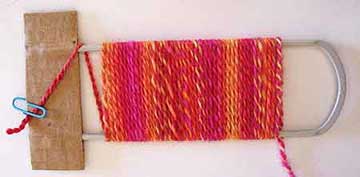
Making a fringe on a hairpin lace crochet fork/staple
This image shows the yarn wound before sewing.
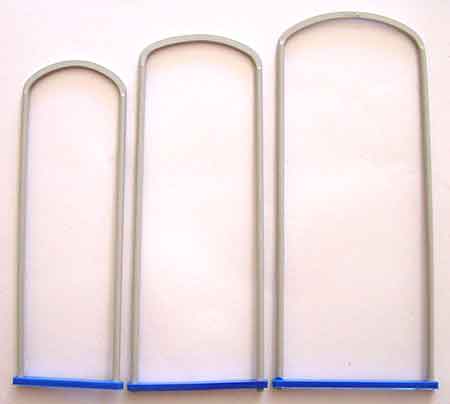
Three different sizes of Pony brand hairpin lace crochet forks. |
Using a hairpin lace fork/staple
Hairpin lace forks are a great alternative to the Singercraft guide. They are readily available in many different widths, are light, and you can use them for crochet when you’re finished making rugs and trims 🙂 Most hairpin lace forks only cost a few dollars so you’ll save a lot of money considering the Singercraft width extensions are currently selling for around US$50 (at the time of writing this article) |
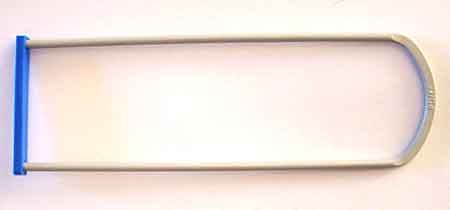 |
On the left you can see a basic hairpin lace crochet fork, or staple. I’ll just call them forks from now on.
This particular one is Pony brand and 4.5cm wide. They are a U-shaped piece of sturdy metal and usually have a tight fitting cap on the end. If your cap is a very tight fit it will be annoying to remove while making your trim/rug. |
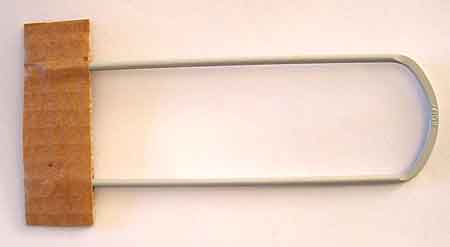 |
Remove the cap and replace it with a piece of corrugated cardboard. The cardboard will keep the tines of the fork at the correct width and will be easy to remove as you stitch. |
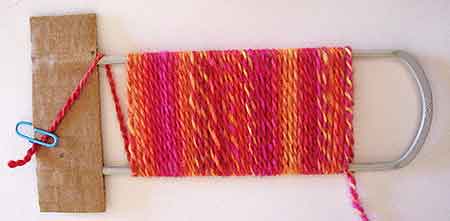 |
To begin, hold the end of your yarn or ribbon in place with a paperclip and start winding. |
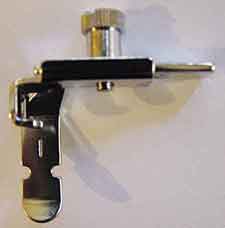 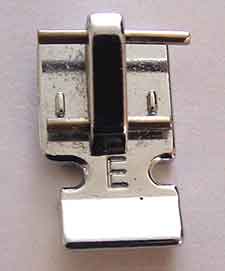
Two types of adjustable zipper feet |
If you want to stitch along the edge of your trim, use an adjustable zipper foot with the needle on the right hand side of the foot. This will allow you to stitch close to the fork without damaging your needle.
To continue adding length to your work, follow the basic directions for the Singercraft guide. |
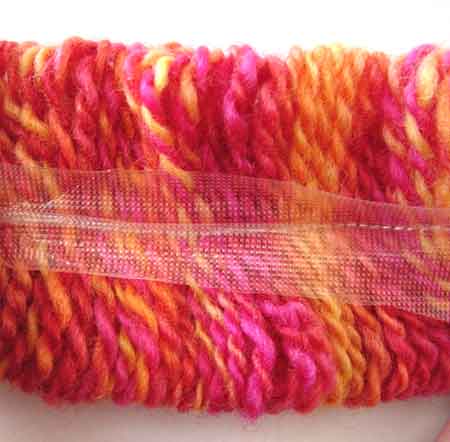 |
Your yarn may slip around a bit during sewing. Push it slightly forward as you sew.
If you have trouble stitching , use a strip of water soluble stabilizer, or a fine tape of some kind. What you use will depend on what your trim is made of, and what you’ll be using it for. |
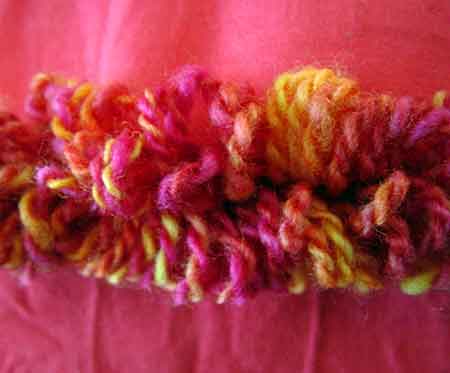 |
One of the advantages to using hairpin crochet forks instead of the Singercraft guide is that you can stitch down the centre to make thick, folded loopy trims. These can be trapped in seams to create luscious cushion edgings, decorate the top of handbags and anything else you can think of. |
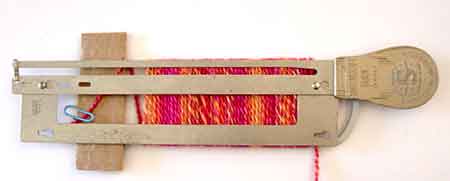
A Singercraft guide and large extension compared to a 45mm hairpin lace crochet fork |
A 20mm crochet fork is approximately the same width as the Singercraft guide
A 30mm crochet fork is the same as the guide with the smaller width extension A 45mm crochet fork is approximately the same as the guide with the wider width extension A 60mm crochet fork is approximately the same as the guide with both width extensions |
| Make your own
If you have the tools you can make your own forks by bending some coat hanger wire around a pipe (broomstick etc) to make the U-shaped metal piece. The size of the pipe depends on the size of the fork you want to make. A pipe with a diameter of 4cm will make a 4cm wide fork and so on. File the ends so they are smooth and poke the ends into a piece of corrugated cardboard as you would for a regular hairpin lace fork. You could use this for crochet as well 🙂 |
Offsite Links
How to make ribbon trim to match your projects (using a hairpin lace crochet frame)
Copyright Sarah Bradberry, June 19th 2010. All rights reserved.
